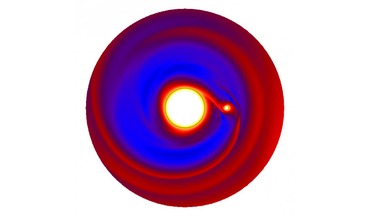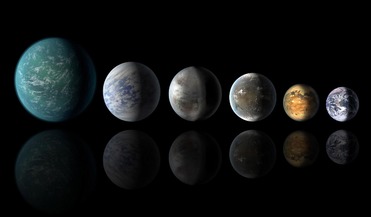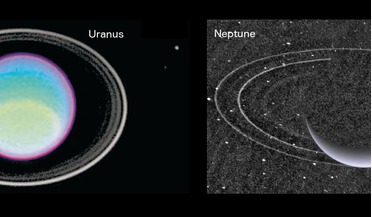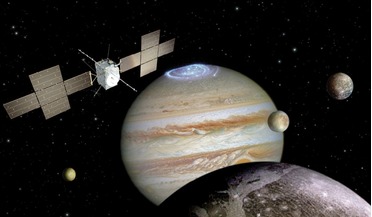 28 October 2016
Temperature is the key to showing how gas giants form say researchers
28 October 2016
Temperature is the key to showing how gas giants form say researchers
... gaseous planet. In both cases, a disk forms around the gas-giants, called the circumplanetary disk, which will serve as a sort... of the circumplanetary disk that feeds the growing gas giant must be different for the two different formation scenarios...
 20 August 2018
Galaxy should be teeming with water-worlds say researchers
20 August 2018
Galaxy should be teeming with water-worlds say researchers
... 2 Earth radii), water worlds (between 2 and 4 Earth radii), transitional planets (between 4 and 10 Earth radii), and gas giants (greater than 10 Earth radii). Scientists will have to wait a while longer to help confirm, or indeed refute these...
 13 January 2020
New study shows a split Solar System that kickstarted growth of Jupiter
13 January 2020
New study shows a split Solar System that kickstarted growth of Jupiter
... further collisions can then coalesce to make a planet or the rocky core of a planet if it then evolves further to become a gas giant. Taking various conditions into account, the models conducted by R. Brasser at the Tokyo Institute of Technology and...
 15 September 2016
Scientists shed light on how our gas giants got their different rings
15 September 2016
Scientists shed light on how our gas giants got their different rings
... settle the debate on the origin and variability of rings around giant planets are a team of astronomers from France and Japan, who...as they drifted about. The theory behind the migration of the gas giants is known as the “Nice Model” – named after the...
 October 2017
Exploring Jupiter’s icy moons
October 2017
Exploring Jupiter’s icy moons
... system work?’ JUICE’s primary mission themes are the emergence of habitable worlds around gas giants and the Jupiter system as an archetype for gas giants, addressing the question: ‘Are there current habitats elsewhere in the solar system with...
 October 2017
Cassini observations open up Saturn’s atmosphere
October 2017
Cassini observations open up Saturn’s atmosphere
..., to the geysers of Enceladus, to the delicacy and rejuvenation of the rings, and to the stormy, churning atmosphere of the gas giant – has cemented Cassini’s legacy as one of the most successful planetary missions of all time. The joint NASA...